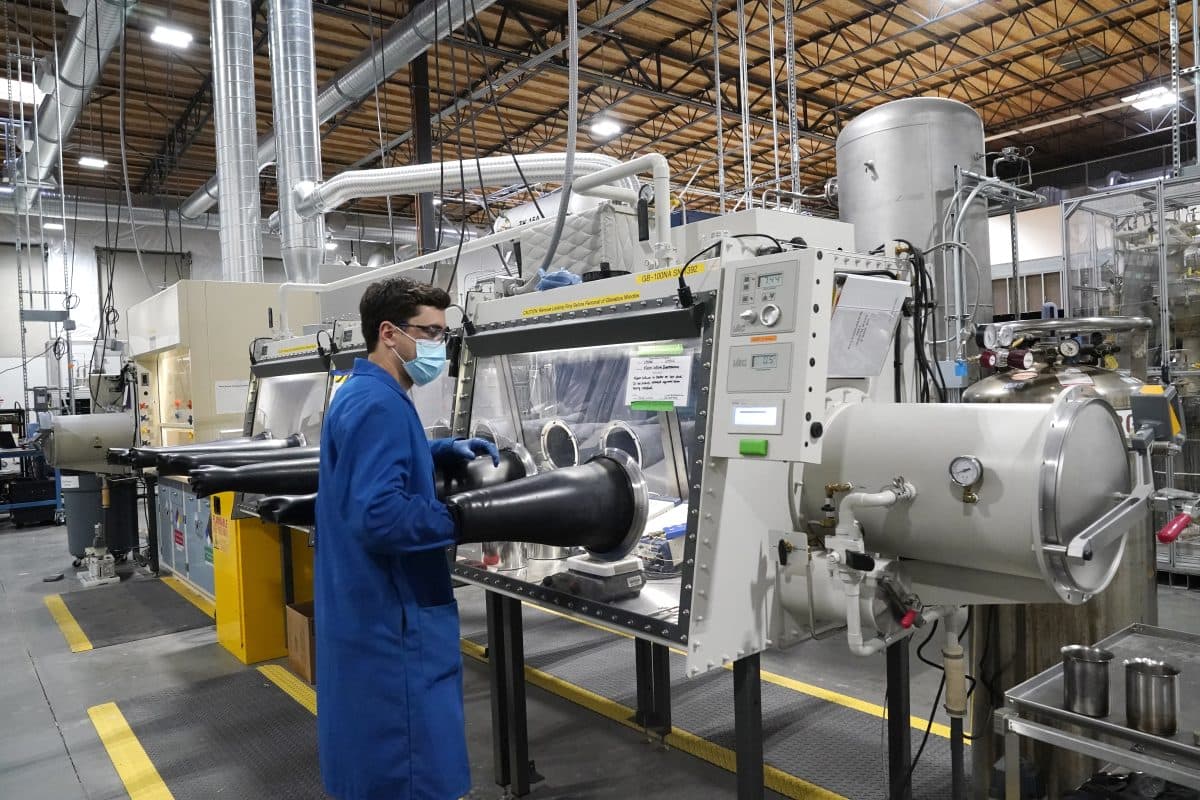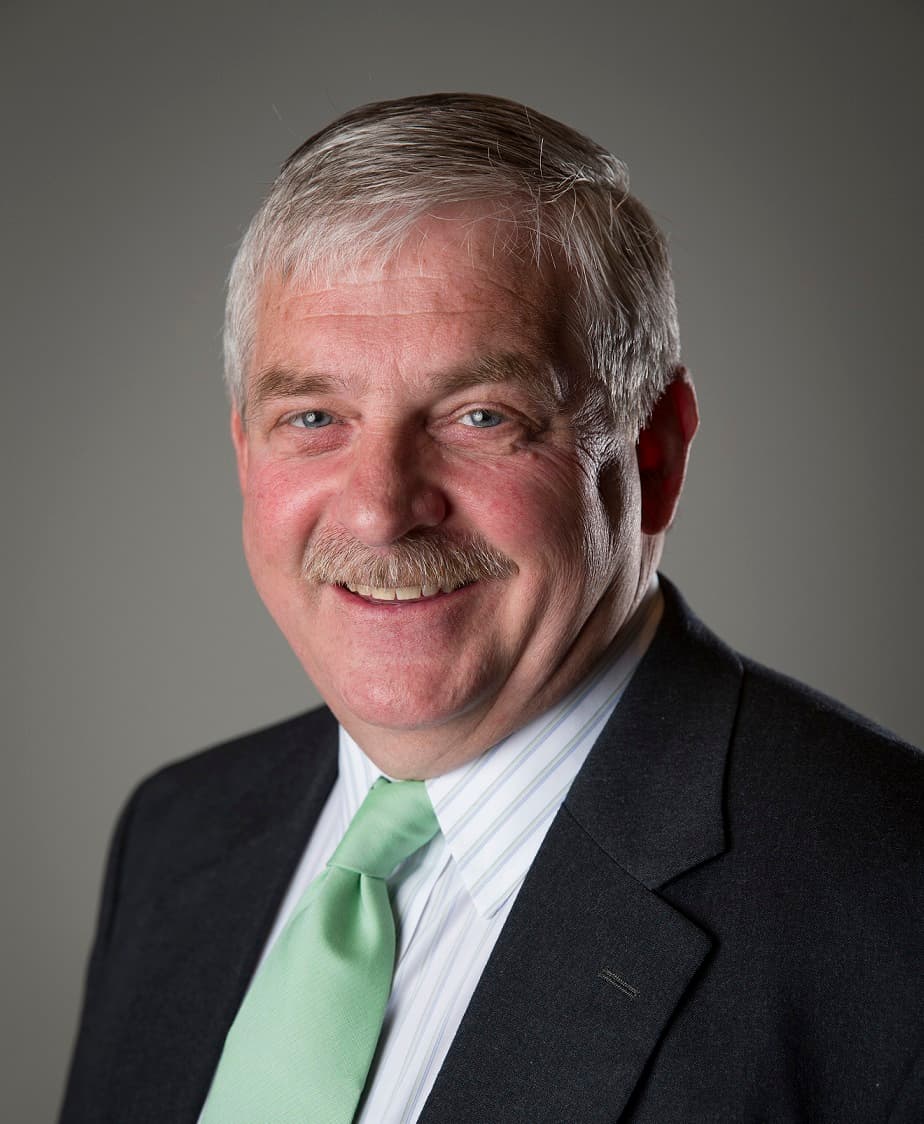Norway’s nuclear option
BloombergNEF lead analyst Chris Gadomski weighs in on whether small modular reactors (SMRs) could provide a viable solution amidst growing concerns over the costs, feasibility, and timeline of expanding available energy sources.

Test engineer Jacob Wilcox pulls his arm out of a glove box used for processing sodium at TerraPower, a company developing and building small nuclear reactors. Photo: Elaine Thompson/AP Photo/NTB
The debate over nuclear power in Norway is deeply polarized. Proponents emphasize the stability and safety of nuclear energy, while sceptics argue that the costs are prohibitive, and the lengthy build times make it an unrealistic option. The nuclear industry’s track record—marked by frequent cost overruns and delays—fuels this scepticism.
A conversation with:

Chris Gadomski er leder for kjernekraftanalyse i BloombergNEF.
Yet, Norway faces the challenge of ensuring a sufficient electricity supply to support new industrial projects and green initiatives, and cut emissions. While demand is expected to grow more slowly than previously forecasted, the country still has tough choices to make. Options like importing large amounts of electricity via controversial cables or expanding renewable energy sources—each with its own set of challenges—are on the table. Onshore wind is increasingly unpopular, offshore wind is feared to be prohibitively expensive, and other options also have their limitations.
In light of these challenges, we spoke with Chris Gadomski, lead nuclear analyst at Bloomberg New Energy Finance, to explore the potential role of nuclear power in Norway’s energy future and to discuss whether small modular reactors (SMRs) could be a viable option in the Norwegian context.
<2°C: – SMRs have become a buzzword in the Norwegian Energy debate, and a company, Norsk kjernekraft AS, recently floated the idea of building four of X-energy’s 80 MW Xe-100 SMRs units by 2035. But when do you expect the first commercial reactors be online? And a high-temperature gas reactor like this … is this a realistic timeframe?
Chris Gadomski: – I’m forecasting or anticipating that there will be some advanced reactors—small modular reactors, advanced reactors like fast reactors, molten salt reactors, high-temperature gas reactors, and microreactors—coming online between 2030 and 2035 in Western Europe and North America. The leading candidates for countries to deploy these would be Canada, the US, Poland, Romania, and Estonia. These countries are all in deep conversations about these advanced reactors.
Finnes i norsk utgave
The technology being discussed includes smaller versions of large boiling water reactors, integrated fast reactors, like the ones being developed by Bill Gates’ company, TerraPower, and several companies talking about high temperature gas reactors.
– But these lead times and projected startup dates, are they reliable? Especially with regards to advanced reactor designs?
– The nuclear power industry is notorious for projects taking longer and costing more than initially expected. For example, in 2010, I was on a panel in London with representatives from an SMR vendor and various venture capital investors in advanced nuclear. At the time, the SMR vendor claimed they would have a project online in the US by 2020. Meanwhile, in conversation with the Russians, they said they would have a floating nuclear power plant operational north of the Arctic Circle by 2020. By December 2019, the Russians were operating their plant, while the US vendor pushed their timeline back to 2030. It’s essential to be cautious about what these companies promise.
– Generally speaking, what are the key challenges associated with other SMR schemes, particularly those based on more traditional technologies like scaling down a boiling water reactor?
– France recently revised their approach to the Nuward technology, and just in July, they decided to redesign it. France has a bias towards building large reactors because such a large percentage of their electricity comes from nuclear. They need to replace these older designs that have been operating for 40-50 years with newer ones.
In the US, they’re planning on extending the life of most existing nuclear plants to 80 years. While the US excels at operating nuclear reactors, they struggle with building new ones, as seen with the Vogtle plant, the most expensive nuclear power plant in the world on a per kilowatt electric basis. The French have faced similar challenges with projects in Finland and Flamanville. Given this, I believe the age of large reactors is behind us, and the future lies in small and advanced reactors.
However, the Koreans are proving me wrong. They recently signed a contract in the Czech Republic to build large reactors with a final investment decision likely next year. Because of their size, SMRs may be better suited for replacing retiring coal plants, particularly in regions with intermittent wind and solar power. For example, TerraPower’s 350 MW fast reactor in Wyoming includes 125 MW of storage to complement renewables.
– There is also talk about the HALEU fuel supply chains in the industry. Could you explain what HALEU is and why it’s become such a problematic point, especially for advanced reactor designs?
– HALEU, or High-Assay Low-Enriched Uranium, refers to uranium that is enriched to about 19.5 percent U-235, compared to the 3.5-4.5 percent typically used in large reactors. This higher enrichment requires additional licensing, special handling facilities, and transportation considerations, entering a more complex regulatory environment. Companies like Urenco, which enrich uranium, face the challenge of investing billions in facilities without a guaranteed customer base.
Currently, the closest reactors to coming online don’t require HALEU, like General Electric Hitachi’s SMR or NuScale’s reactors. Meanwhile, there’s growing investment and political support for fusion technology, which could potentially outpace advanced fission reactors. Fusion avoids many issues associated with fission, such as spent fuel and safety concerns. If you’re a utility, you now have five options to consider: large reactors, SMRs, advanced reactors, microreactors, and fusion. The market is crowded, and it’s unclear which technology will cross the finish line first or which one utilities will prefer.
– Since you mentioned fusion, what are your thoughts on the recent developments in that field? Is it mostly hype, or is there realism behind the progress?
– Since June, I’ve visited Commonwealth Fusion, ZAP Energy, and TAE Technologies, all leading contenders in the US. These companies are serious, with significant funding and technological progress. However, they have yet to achieve net energy gain. I suspect that once they do, there will be a massive influx of cash into the fusion sector.
Commonwealth Fusion’s prototype is just 300 meters away from residential housing, something you could never do with an SMR or advanced reactor. Fusion offers industrial process heat and can be located in sensitive areas. Governments, including those of China, Russia, the US, the UK, and Korea, are all heavily invested in moving this technology forward. Fusion could complement the increasing deployment of renewables while avoiding many of the problems associated with fission technology.
– One of the most attractive aspects of SMRs is the idea that you could bring down costs through assembly-line production. When do you think this will become a reality, and how close is, for example, GE Hitachi to having a commercial product available that can be bought off the shelf and installed in a couple of years?
– GE Hitachi is clever—they have projects in the US and Canada, with plans for at least four SMR reactors in Canada and one in the US. Poland is interested in up to 24 of these reactors, and Estonia has selected this technology. The key is having a standardized design, which simplifies the supply chain, operation, and maintenance. One advanced reactor CEO once said, «Don’t give me money to purchase the first reactor; give me money to build the factory so I can build 10 reactors.» This is the strategy GE Hitachi is pursuing—developing a consortium and an order book that spans multiple countries.
This approach is similar to what made the French successful with their nuclear fleet. There’s a joke within the nuclear industry: in France, there are five different types of reactors but 100 different types of cheese. Meanwhile, in the US, there are 100 different types of reactors but only five types of cheese. There are advantages to having a standardized design in terms of supply chain, operation, maintenance, and training. But, of course, if something goes wrong with one reactor, you have to check all the others of that type. So, it’s a double-edged sword.
– Norway produces 98% of its electricity from renewable sources, primarily hydropower. Given the potential for energy shortages within the next decade or two, what would be your recommendation for Norway? Should we wait for SMRs to be commercialized, reinvest in traditional large-scale nuclear, or consider another option?
– I’m not allowed to provide investment advice, so take this as general insight rather than a recommendation. The obstacles to building large reactors in Europe are formidable. Projects like Vogtle, Flamanville, and Hinkley Point have been incredibly expensive and time-consuming. In contrast, China, which is building 20-30 reactors with a dedicated team, can do so at a fraction of the cost.
For Europe, SMRs or advanced reactors make more sense, especially as a complement to renewables or to replace retiring coal plants. Technologies like the Integral Fast Reactor can even burn spent fuel, addressing legacy nuclear waste issues. Fusion is another option, it’s high risk, though potentially high reward. In a country like Norway, with significant social and political considerations, smaller reactors or fusion might be more acceptable than large-scale projects.
– How has the global landscape for SMR development evolved since 2021, particularly in light of the Ukraine war and increased energy demand from AI and other technologies?
– Since 2021, the global landscape for SMR development has seen some evolution, but progress has been mixed. The Ukraine war has amplified concerns over energy security, which has driven renewed interest in SMRs, particularly in Europe. However, the actual deployment of SMRs has been slower than anticipated due to ongoing cost, regulatory, and technological challenges.
Countries like Russia and China have continued to advance their SMR projects, with Russia even exploring exporting its technology to new markets like Uzbekistan. Meanwhile, in Western markets, the push for SMRs is still largely in the planning and development stages, with significant challenges remaining before widespread commercialization. The increased energy demand from AI and other technologies has added urgency to these efforts, but it hasn’t yet translated into faster deployment. In fact, while there’s growing political support for SMRs, especially as a complement to renewables, the timeline for their commercialization has likely been pushed further into the 2030s.
Overall, while there’s progress, the timeline remains extended, and the global energy landscape continues to evolve with these ongoing geopolitical and technological pressures.
– There’s a debate here in Norway about whether a nuclear project could ever be economically sustainable without a relatively high guaranteed electricity price or other types of government guarantees, subsidies and funding. Has any nuclear project been constructed on time, on budget, or without significant public financing?
– Perhaps the biggest success story in recent years has been the Korean project in Abu Dhabi, which was relatively close to being on schedule and on budget. But when you look at the track record in the US and Western Europe, it’s terrible. Every large nuclear project has been plagued with delays and cost overruns. On the other hand, the Chinese and Russians have managed to keep costs much lower, largely due to strong government support. State-controlled organizations like Rosatom and Chinese companies have more leeway in promoting their technologies globally. In contrast, Western companies struggle to compete on cost and timelines.

